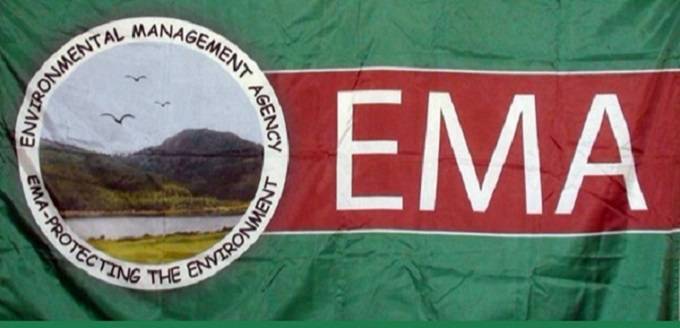What are Multi-lateral Environmental Agreements (MEAs)?

A Multi-lateral Environmental Agreement or convention is a legally binding international treaty that may be endorsed by member states. Conventions are aimed at collectively addressing specific issues by a number of member states and Zimbabwe is a signatory to the following:
The CITES Convention
CITES (The Convention on International Trade in Endangered Species of Wild Fauna and Flora also known as the Washington Convention) was drafted as a result of a resolution adopted in 1963 at a meeting of the international Union for Conservation of Nature (IUCN).
The convention was opened for signature in 1973 but came into force on 1 July, 1975.
Recognising that wild flora and fauna in their many beautiful and varied forms are an irreplaceable part of natural systems of the earth which must be protected for this and the generations to come, its aim was to:
– Encourage member states to be the best protectors of their wild flora and fauna;
– Ensure that international trade in a variety of wild animals and plants does not threaten the survival of the species in the wild;
– Protect certain species of wild flora and fauna from over exploitation through international trade; it protects more than 34 000 species of animals and plants.
The Ramsar Convention
The Convention on Wetlands, called the Ramsar Convention, provides the framework for national action and international cooperation for the conservation and wise use of wetlands and their resources.
The Convention was adopted 2 February 1971, in the Iranian City of Ramsar.
Zimbabwe ratified it on 11 February 2012 and has 7 wetlands which were designated as Wetlands of International importance or Ramsar sites, namely; the Victoria Falls, Driefontein Grasslands, Middle Zambezi/Mana Pools,Lake Chivero, MonavaleVlei, Chinhoyi Caves and Cleverland Dam.
The Convention on Biological Diversity (CBD)
Also known as the Biodiversity Convention, the Convention on Biological Diversity was opened for signature at the Earth Summit in Rio de Janeiro on 5 June 1992 and entered into force on 29 December 1993.
The earth’s biological resources are vital to humanity’s economic and social development.
As a result there is growing recognition that biological diversity is a global asset of tremendous value to present and future generations.
At the same time the threat to species and ecosystems has never been as great as it is today.
The Convention’s objective was to develop national strategies for the conservation and sustainable use of biological diversity and has three main goals namely;
– The conservation of biological diversity (or biodiversity);
– The sustainable use of its components and
– The fair and equitable sharing of benefits arising from genetic resources.
The United Nations Framework Convention on Climate Change (UNFCC)
This was negotiated at the United Nations Conference on Environment and Development (UNCED), informally known as the Earth Summit held in Rio de Janeiro from 3 to 14 June 1992.
Its objective is to stabilise greenhouse gas concentrations in the atmosphere at a level that prevents dangerous anthropogenic interference with the climate system.
Kyoto Protocol
The Kyoto Protocol is linked to the United Nations Framework Convention on Climate Change, which commits its Parties by setting internationally binding emission reduction targets.
Recognising that developed countries are principally responsible for the current high levels of greenhouse gas (GHG) emissions in the atmosphere as a result of more than 150 years of industrial activity, the Protocol places a heavier burden on developed nations under the principle of “common but differentiated responsibilities.”
During the first commitment period, 37 industrialised countries committed to reduce GHG emissions to an average of five percent (5%) against 1990 levels. During the second commitment period, Parties committed to reduce GHG emissions by at least 18 percent (18%) below 1990 levels in the eight-year period from 2013 to 2020.
The Kyoto Protocol was adopted in Kyoto, Japan, on 11 December 1997 and entered into force on 16 February 2005. Zimbabwe ratified this convention on 30 January 2009.
The Montreal Protocol
The Montreal Protocol on Substances that Deplete the Ozone Layer was designed to reduce the production and consumption of ozone depleting substances in order to reduce their abundance in the atmosphere, and thereby protect the earth’s fragile ozone Layer.
The original Montreal Protocol <http://ozone.unep.org/en/handbook-montreal-protocol-substances-deplete-ozone-layer/27571> was agreed on 16 September 1987 and entered into force on 1 January 1989.
United Nations Convention on to Combat Desertification
The Convention addresses specifically the arid, semi-arid and dry sub-humid areas, known as the drylands, where some of the most vulnerable ecosystems and peoples can be found.
It is the sole legally-binding international agreement linking environment and development to sustainable land management. The convention was established in 1994.
-Send your feedback to; [email protected]/[email protected], like us on Facebook: Environmental Management Agency and twitter:@EMAeep or visit our website www.ema.co.zw.
Alternatively, call us on: Tel 086 77006244 and Toll-free 08080028; or use our WhatsApp platform 0779565707. We are ready to listen.










Comments